448. When people on Hawaii looked for the
return to visibility of the Pleiades in the November
evenings and counted 33 days from there to the December
solstice they also had counted with a cycle for Lono (Rogo) which began 10
days later, i.e. 23 days before the solstice. However, Metoro identified the figure in Ca3-25 (→ Julian vernal
equinox) with tagata rogo - and this was when the Sun, at the
time of rongorongo, had been in December 5 with the Full Moon
at Cursa at the end of the Eridanus River:

The precise position of the Pleiades was marked by Alcyone (*56),
we can assume, and this star should have returned (in the
early morning) to visibility 16
days later at *72, viz. at Ca3-21 (72). From there to
the beginning of the cycle of Lono there
could be 10 days (glyphs), but we can only find 4
glyphs to
tagata rogo in Ca3-25 (76). 6 more should be needed in order to reach Ca4-6
(→ 24 → 'midnight'), when the Full Moon was at the
beginning of the triplet of stars at the Belt of Orion
and the Sun would have been in December 11, i.e. not 23 but 10 days before the
solstice. And this corresponded to the position of the
pyramid of Khufu:
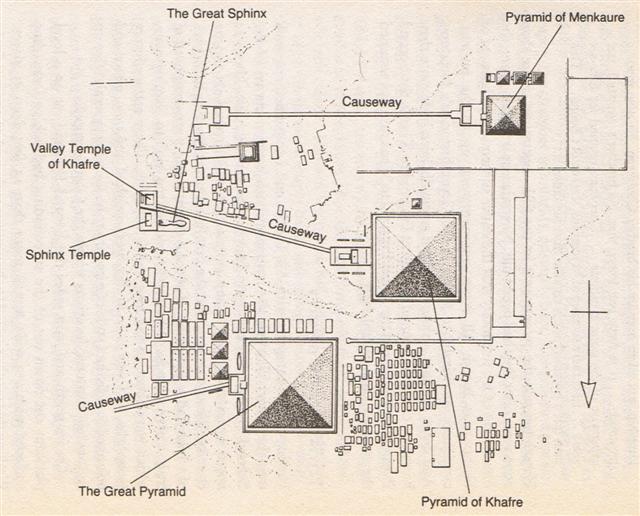
 |
 |
 |
|
Ca3-1 |
Ca3-2 |
Ca3-3 (54 = 2 * 27) |
|
kiore - henua |
tapamea |
tagata rere ki
te toki - te hau tea |
 |
 |
 |
 |
 |
|
Ca3-4 |
Ca3-5 |
Ca3-6 |
Ca3-7 |
Ca3-8 (59 = 2 * 29½) |
|
kiore ki te
henua |
ihe tapamea |
e tagata mau
toki ki te henua |
e hokohuki mau
ki te matagi |
kiore i te
henua |
 |
 |
 |
 |
|
Ca3-9 |
Ca3-10 |
Ca3-11 |
Ca3-12 (63 = 7 * 9) |
|
tapamea
tagata kua iri |
ki te pa |
kua hua |
ki te
kotiga |
|
MARCH 21 (80 = 144 - 64) |
22 (*1) |
23 |
24 |
 |
 |
 |
 |
|
Ca3-13 |
Ca3-14 (65 = 5 * 13) |
Ca3-15 |
Ca3-16 |
|
kiore i te
henua |
tapamea -
tagata hoi hatu |
ki te
ariki |
kiore i te
henua |
|
CLOSE TO THE FULL MOON: |
|
May 24 (144 = 80 + 64)
HYADUM II = δ¹ Tauri
(64.2) |
25
Net-19 (Crow)
AIN (Eye) =
ε
Tauri,
θ¹ Tauri, θ² Tauri (65.7) |
26
no star listed (66) |
27
no star listed (67) |
 |
 |
 |
 |
| Ca3-17 |
Ca3-18 |
Ca3-19 |
Ca3-20 → 4 * 80 |
| tapamea - tagata rima iri |
te henua te hokohuki |
te kava |
te kiore i te henua |
| JAN 31 |
FEBR 1 (32 = 73 - 41) |
2 |
3 |
4 (115 - 80) |
 |
 |
 |
 |
 |
| Ca3-21 (→ March 21 → Gregorian equinox) |
Ca3-22 (73) |
Ca3-23 |
Ca3-24 |
Ca3-25 (→ March 25→ Julian equinox) |
| tagata tuu rima ki ruga |
te maitaki |
te henua |
Rei hata ia |
tagata rogo |
|
Hata. 1. Table, bureau. P Pau.: afata, a chest, box. Mgv.: avata, a box, case, trunk, coffin. Mq.: fata, hata, a piece of wood with several branches serving as a rack, space, to ramify, to branch; fataá, hataá, stage, step, shelf. Ta.: fata, scaffold, altar. 2. Hakahata, to disjoint; hakahatahata, to loosen, to stretch. P Pau.: vata, an interval, interstice. Mgv.: kohata, the space between two boards, to be badly joined; akakohata, to leave a space between two bodies badly joined; hakahata, to be large, broad, wide, spacious, far off. Mq.: hatahata, fatafata, having chinks, not tightly closed, disjointed. Ta.: fatafata, open. 3. Hatahata, calm, loose, prolix, vast. Mgv.: hatahara, broad, wide, spacious, at one's ease. Ta.: fatafata, free from care. Mq.: hatahata, empty, open. 4. Hatahata, tube, pipe, funnel. Churchill. Sa.: fata, a raised house in which to store yams, a shelf, a handbarrow, a bier, a litter, an altar, to carry on a litter; fatāmanu, a scaffold. To.: fata, a loft, a bier, a handbarrow, to carry on a bier; fataki, a platform. Fu.: fata, a barrow, a loft; fatataki, two sticks or canes attached to each other at each side of a house post to serve as a shelf. Niuē: fata, a cage, a handbarrow, a shelf, a stage, (sometimes) the upper story of a house. Uvea: fata, a barrow, a bier. Fotuna: fata, a stage. Ta.: fata, an altar, a scaffold, a piece of wood put up to hang baskets of food on; afata, a chest, a box, a coop, a raft, a scaffold. Pau.: fata, a heap; afata, a box, a chest. Ma.: whata, a platform or raised storehouse for food, an altar, to elevate, to support. Moriori: whata, a raft. Mq.: fata, hata, hataá, shelves. Rapanui: hata, a table. Ha.: haka, a ladder, an artificial henroost; alahaka, a ladder. Mg.: ata, a shelf; atamoa, a ladder; atarau, an altar. Mgv.: avata, a coffer, a box. Vi.: vata, a loft, a shelf; tāvata, a bier. The Samoan fata is a pair of light timbers pointed at the ends and tied across the center posts of the house, one in front, the other behind the line of posts; rolls of mats and bales of sennit may be laid across these timbers; baskets or reserved victuals may be hung on the ends. The litter and the barrow are two light poles with small slats lashed across at intervals. The Marquesan fata is a stout stem of a sapling with the stumps of several branches, a hat tree in shape, though found among a barehead folk. These illustrations are sufficient to show what is the common element in all these fata identifications, light cross-pieces spaced at intervals. With this for a primal signifaction it is easy to see how a ladder, a raft, a henroost, an altar come under the same stem for designation. Perhaps Samoan fatafata the breast obtains the name by reason of the ribs; it would be convincing were it not that the plumpness of most Samoans leaves the ribs a matter of anatomical inference. Churchill 2. ... Teke said to Oti, 'Go and take the hauhau tree, the paper mulberry tree, rushes, tavari plants, uku koko grass, riku ferns, ngaoho plants, the toromiro tree, hiki kioe plants (Cyperus vegetus), the sandalwood tree, harahara plants, pua nakonako plants, nehenehe ferns, hua taru grass, poporo plants, bottle gourds (ipu ngutu), kohe plants, kavakava atua ferns, fragrant tuere heu grass, tureme grass (Diochelachne sciurea), matie grass, and the two kinds of cockroaches makere and hata.' ... The division into quarters of a 28-series can be applied to the main phases of the moon during the visible period as was as to a (reflex of the old world?) sidereal month. The separate subgroup (29 makere - 30 hata) consists of the names of two types of cockroaches, but in related eastern Polynesian languages these names can also be explained on a different level. MAO. makere, among others, 'to die', and whata, among others, 'to be laid to rest on a platform', deserve special attention. The theme hinted at is one of death and burial. In our scheme they occur at just that time when the moon 'has died'! This lends further support to the lunar thesis. Barthel 2.

|
| CLOSE TO THE FULL MOON: |
| June 1
π4 Orionis (72.1), ο¹ Orionis (72.4), π5 Orionis (72.8)
*31.0 = *72.4 - *41.4 |
2 (336 - 183 = 153)
π¹ Orionis (73.0), ο² Orionis (73.4), HASSALEH = ι Aurigae (73.6), π6 Orionis (73.9) |
3
ALMAAZ (The Male Goat) = ε Aurigae (74.7), HAEDUS I = ζ Aurigae (74.8) |
4
HAEDUS II = η Aurigae (75.9) |
5 (= 21 - 16) 5h (76.1)
ε Leporis (76.0), CURSA = β Eridani (76.4), λ Eridani (76.7) |
| 'May 5 |
6 (153 - 27 = 126) |
7 |
8 |
9 |
| "April 21 (125 - 14 = 111) |
22 (153 - 41 = 112) |
23 |
24 |
25 (115 = 156 - 41) |
 |
| CLOSE TO THE SUN: |
| Dec 1
Ophiuchi (255.3), GRAFIAS (Claws) = ζ Scorpii (255.4)
*214.0 = *255.4 - *41.4 |
2 (336 = 4 * 84)
κ Ophiuchi (256.2), ζ Arae (256.5), ε Arae (256.8), CUJAM (Club) = ε Herculi (256.9) |
3
no star listed (257) |
4
17h (258.7)
ARRAKIS = μ Draconis (258.7) |
5 (= 21 - 16) Mula-19 (The Root)
SABIK (The Preceding One) = η Ophiuchi (259.7), η Scorpii (259.9) |
| 'Nov 4 |
5 (336 - 27 = 309) |
14 (*257 - *27 = *230) |
15 |
16 |
| "Oct 21 (308 - 14 = 294) |
22 (336 - 41 = 295) |
23 (*257 - *41 = *216) |
24 |
25 (314 - 16 = 298) |
| kua tupu te rakau |
kua tupu - te kihikihi |
te hau tea |
tagata - te rau hei |
 |
 |
 |
 |
| Ca4-1 (77) |
Ca4-2 |
Ca4-3 |
Ca4-4 (80) |
| CLOSE TO THE FULL MOON: |
| June 6 (314 / 2) |
7 |
8 |
9 (160 = 80 + 80) |
|
... The month, which takes its name from Juppiter the oak-god, begins on June 10th and ends of July 7th. Midway comes St. John's Day, June 24th, the day on which the oak-king was sacrificially burned alive. The Celtic year was divided into two halves with the second half beginning in July, apparently after a seven-day wake, or funeral feast, in the oak-king's honour ... |
| FEBR 5 (36 = 77 - 41) |
RIGEL (Foot) |
7 |
EL-NATH (Butting One) |
|
... the Palenque scribes repeated Creation again and described it as 'it was made visible, the image at Lying-down-Sky, the First-Three-Stone-Place'. Then we learned that five hundred and forty-two days later (1.9.2 in the Maya system), Hun-Nal-Ye 'entered or became the sky' (och ta chan). This 'entering' event occurred on February 5, 3112 BC ... |
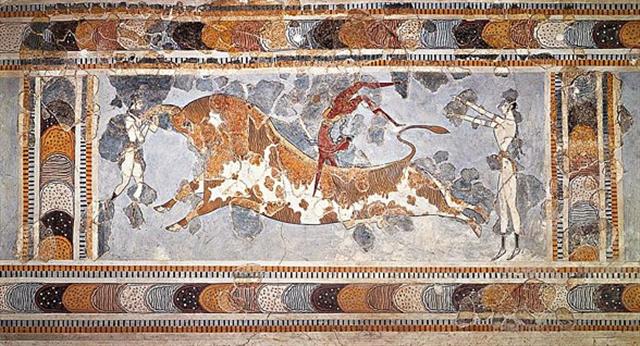 |
| CLOSE TO THE SUN: |
| Dec 6 (340 = 157 + 183) |
7 |
8 |
9 |
| NODUS I = ζ Draconis (260.0), π Herculis (260.7), RAS ALGETHI = α Herculis (260.8) |
SARIN = δ Herculis (261.0), ο Ophiuchi (261.4)
*220.0 = *261.4 - *41.4
ALRISHA (α Piscium)
|
ξ Ophiuchi (262.2), θ Ophiuchi, ν Serpentis, ζ, ι Apodis (262.4), ι Arae (262.8), ρ Herculis (262.9) *221.0 = *262.4 - *41.4 |
β, γ Arae (263.3), κ Arae (263.5), σ Ophiuchi (263.6) |
| 'Nov 17 (340 - 27 = 313) |
18 (314 → π) |
19 |
20 (*263 - *27 = *236) |
| "Oct 26 |
27 (300 = 341 - 41) |
28 |
29 (*222 = *236 - *14) |
| te hokohuki i te moko |
te rau hei |
e gagata hakaariki |
manu |
te rau hei |
 |
 |
 |
 |
 |
| Ca4-5 |
Ca4-6 → 24 |
Ca4-7 (83) |
Ca4-8 |
Ca4-9 |
| CLOSE TO THE FULL MOON: |
| June 10
ψ Orionis (81.1), NIHAL (Thirst-slaking Camels) = β Leporis (81.7) |
KHUFU 11
MINTAKA (Belt) = δ Orionis, υ Orionis (82.4), χ Aurigae (82.5), ε Columbae (82.6)
*41 = *82.4 - *41.4
|
KHAFRE 12
Al Hak'ah-3 (Brand) / Mrigashīrsha-5 (Stag's Head) / Turtle Head-20 (Monkey) / Mas-tab-ba-tur-tur (Little Twins)
ARNEB = α Leporis, Crab Nebula = M1 Tauri (83.0, φ¹ Orionis (83.1), HEKA = λ Orionis, Orion Nebula = M42 (83.2), φ² Orionis (83.6), ALNILAM (String of Pearls) = ε Orionis (83.7) |
MENKAURE 13 (164)
Three Stars-21 (Gibbon) / Shur-narkabti-sha-shūtū-6 (Star in the Bull towards the south) / ANA-IVA-9 (Pillar of exit)
HEAVENLY GATE = ζ Tauri, ν Columbae (84.0), ω Orionis (84.2), ALNITAK (Girdle) = ζ Orionis, PHAKT (Phaet) = α Columbae (84.7) |
14
ο Aurigae (85.8), γ Leporis (85.9)
YANG MUN (α Lupi)
|
|
... Curiously enough, Egypt does enjoy a special geographical situation: as is well known, the latitude and longitude lines which intersect just beside the Great Pyramid (30º north and 31º east) cross more dry land than any others. Curiously, too, at the end of the last Ice Age, when millions of square miles of glaciation were melting in northern Europe, when rising sea levels were flooding coastal areas all around the globe, and when the huge volume of extra moisture released into the atmosphere through the evaporation of the ice fields was being dumped as rain, Egypt benefited for several thousands of years from an exceptionally humid and fertile climate ...
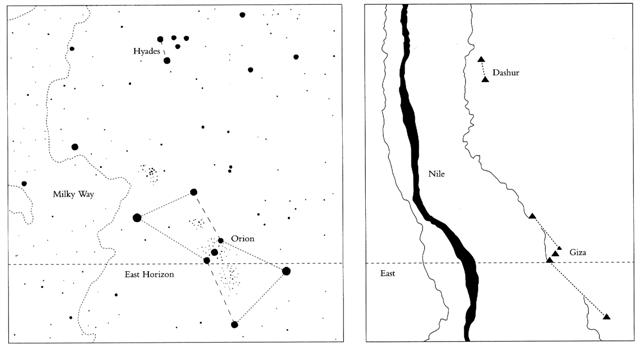
|
| FEBR 9 (40 = 81 - 41) |
10 |
11 |
12 |
13 |
|
... On February 9 the Chorti Ah K'in, 'diviners', begin the agricultural year. Both the 260-day cycle and the solar year are used in setting dates for religious and agricultural ceremonies, especially when those rituals fall at the same time in both calendars. The ceremony begins when the diviners go to a sacred spring where they choose five stones with the proper shape and color. These stones will mark the five positions of the sacred cosmogram created by the ritual. When the stones are brought back to the ceremonial house, two diviners start the ritual by placing the stones on a table in a careful pattern that reproduces the schematic of the universe. At the same time, helpers under the table replace last year's diagram with the new one. They believe that by placing the cosmic diagram under the base of God at the center of the world they demonstrate that God dominates the universe. The priests place the stones in a very particular order. First the stone that corresponds to the sun in the eastern, sunrise position of summer solstice is set down; then the stone corresponding to the western, sunset position of the same solstice. This is followed by stones representing the western, sunset position of the winter solstice, then its eastern, sunrise position. Together these four stones form a square. They sit at the four corners of the square just as we saw in the Creation story from the Classic period and in the Popol Vuh. Finally, the center stone is placed to form the ancient five-point sign modern researchers called the quincunx ...
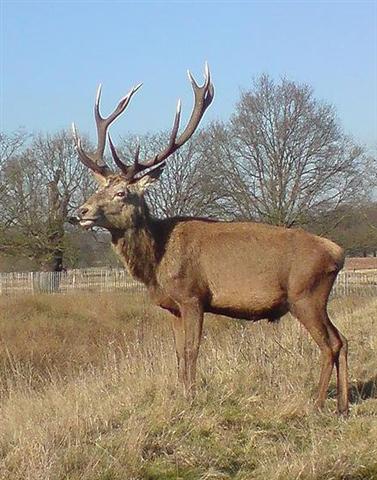
... A sidelight falls upon the notions connected with the stag by Horapollo's statement concerning the Egyptian writing of 'A long space of time: A Stag's horns grow out each year. A picture of them means a long space of time.' Chairemon (hieroglyph no. 15, quoted by Tzetzes) made it shorter: 'eniautos: elaphos'. Louis Keimer, stressing the absence of stags in Egypt, pointed to the Oryx (Capra Nubiana) as the appropriate 'ersatz', whose head was, indeed, used for writing the word rnp = year, eventually in 'the Lord of the Year', a well-known title of Ptah. Rare as this modus of writing the word seems to have been - the Wörterbuch der Aegyptischen Sprache (eds. Erman and Grapow), vol. 2, pp. 429-33, does not even mention this variant - it is worth considering (as in every subject dealt with by Keimer), the more so as Chairemon continues his list by offering as number 16: 'eniautos: phoinix', i.e., a different span of time, the much-discussed 'Phoenix-period' (ca. 500 years) ...
40 (February 9) + 16 = 56 (8 weeks). And 80 + 56 = *56 was the position of Alcyone who changed the season to a beneficient one suitable for sailing - whereas the preceding day was number 500 = 365 + 80 + 55, where there were 6 'stones' (Tau-ono).
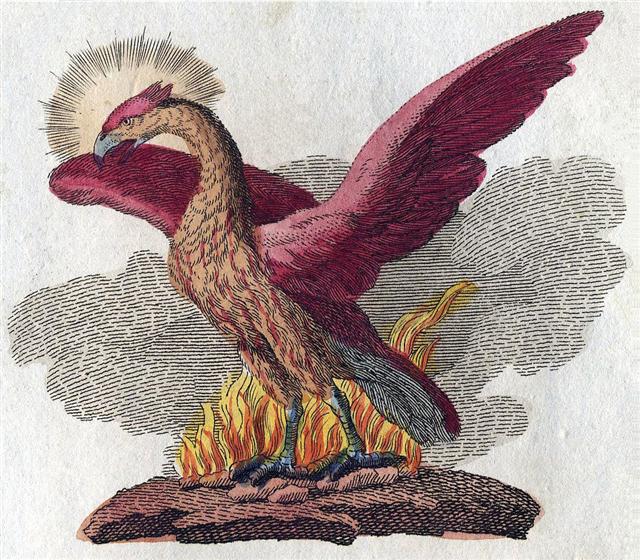 |
|
CLOSE TO THE SUN: |
 |
|
Dec 10 (*264) LESATH (Sting) = υ Scorpii, δ Arae (264.7), CHOO (Club) = α Arae (264.9) |
11 (345 = 162 + 183) Al Shaula-17
ALWAID (Mother Camels) = β Draconis, MAASYM (Wrist) = λ Herculis (265.1), SHAULA (Sting) = λ Scorpii (265.3), KUMA = ν Draconis (265.6), σ Arae (265.9)
HAMAL (α ARIETIS)
|
12 RAS ALHAGUE = α Ophiuchi (266.1), SARGAS = θ Scorpii (266.3), μ Ophiuchi, π Arae (266.5), NAN HAE (Southern Sea) = ξ Serpentis (266.6), AL DHĪLI (The Wolf) = ω Draconis, ι Herculis (266.7) |
13 (LUCIA) λ Arae (267.1), GIRTAB (Seizer) = κ Scorpii, ο Serpentis (267.6), DSIBAN (Wolf Pair) = ψ Draconis (267.9) |
14 KELB ALRAI (Dog of the Shepherd) = β Ophiuchi, μ Arae (268.1), KEW HO (Nine Rivers) = μ Herculis (268.6), η Pavonis (268.7), APOLLYON = ι Scorpii (268.9) |
|
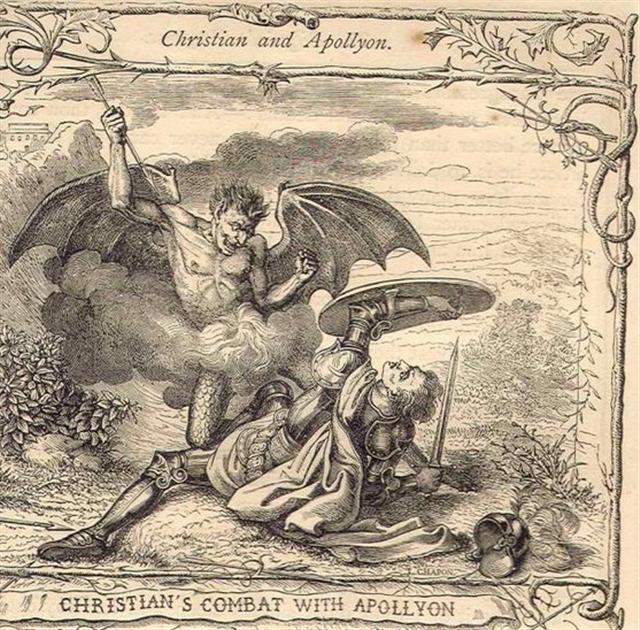
|
| te hokohuki |
te moko |
te hokohuki |
|
Moko 1. Lizard; moko manu uru, figurine of a lizard (made of wood). 2. To throw oneself on something, to take quickly, to snatch; to flee into the depths (of fish); tagata moko, interloper, intruder, someone who seizes something quickly and swiftly, or cleverly intrudes somewhere; ka-moko ki te kai, ka-moko, ka-aaru, quickly grab some food, grab and catch. 3. To throw oneself upon someone, to attack: he-moko, he-reirei, to attack and kick. 4. Moko roa: to make a long line (of plantation); moko poto, to make a short line. 5. Ihu moko; to die out (a family of which remains only one male without sons); koro hakamao te mate o te mahigo, he-toe e-tahi tagata nó, ina aana hakaara, koîa te me'e e-kî-nei: ku-moko-á te ihu o te mahigo. when the members of family have died and there remains only one man who has no offspring, we say: ku-moko-á te ihu o te mahigo; to disappear (of a tradition, a custom), me'e ihu moko o te tagata o te kaiga nei, he êi, the êi is a custom no longer in use among the people of this island. Vanaga. 1. Lizard. P Pau., Mgv., Mq.: moko, id. Ta. moó, id. 2. To stun, to be dizzy. PS Sa.: mo'o, to be surprised. Hakamoko, to accomplish. Mokohi, grain, full-grown berry (mokoi); mokohi haraoa, grain. Mgv.: mokohe, food. Mokoimokoi, heart T, kidney. Mokomoko, sharp, pointed, slender, cape, headland; gutu mokomoko, pointed lips. Churchill. Mgv.: mokora, a duck. Ta.: moora, id. Churchill. MO'O, s. Haw., general name for all kinds of lizards. Tah.: mo'o, lizard. Sam.: mo'o, lizard; v. to be surprised. Sanskr., mush, to steal, rob, plunder; muçalî, a house-lizard; mûsha, rat, mouse; mosha, robbing. Zend, mûska; Pers. and Bokhara, mûsh; Kurd., meshk; Afghan, mukhak; Arm., mugn; Osset, misht, rat, mouse. Greek, μυς, a mouse. Lat., mus, mouse, rat, marten, sable. A.-Sax., O. H. Germ., Scand., mûs, mouse. Anc. Slav., myshi; Illur., misc, mouse. (Fornander)

... Kepelino wrote: 'Lalani or stars of heaven are the stars close to the heavens, called ruling stars. There is a vast number of these stars and they shine with a tiny, twinkling light because of their great height.' Lalani, in the Kumulipo or Hawaiian Chant of Creation, was translated 'row of stars' by Queen Liliuokalani. The Hawaiians also called the Milky Way Kuamoo, Backbone of the Lizard. Many Polynesian names for the Milky Way may be reminiscent of the crocodiles of Western Melanesia, the moko-roa, 'long lizards' of legend, for the same motif is found in various parts of the Pacific. The Tuamotuans termed the Milky Way Vaero-o-te-moko, Tail of the Lizard, and Mango-roa, Long Shark. The Mangaian name Moko-roa-i-ata, Long-lizard-of-morning, not only sounds the lizard or crocodile note but also refers to the method of determining the small hours of the night before the rising of the morning star. The Maori used the same term contracted to Mokoroiata. Again they called the Galaxy Mango-roa, Long Shark, and Mangoroiata, Long-shark-of-dawn ...
... A une certaine saison, on amassait des vivres, on faisait fête On emmaillotait un corail, pierre de défunt lezard, on l'enterrait, tanu. Cette cérémonie était un point de départ pour beacoup d'affaires, notamment de vacances pour le chant des tablettes ou de la priére, tanu i te tau moko o tana pure, enterrer la pierre sépulcrale de lézard de sa prière ...
... On condition that, if he rescued her, she should be his wife and return to Greece with him, Perseus took to the air again, grasped his sickle and, diving murderously from above, beheaded the approaching monster, which was deceived by his shadow on the sea. He had drawn the Gorgon's head from the wallet, lest the Monster might look up, and now laid it face downwards on a bed of leaves and sea-weed (which immediately turned to coral), while he cleansed his hands of blood, raised three altars and sacrificed a calf, a cow, and a bull to Hermes, Athene, and Zeus respectively ... |
 |
 |
 |
| Ca4-10 |
Ca4-11 |
Ca4-12 (80 + 8) |
| CLOSE TO THE FULL MOON: |
| June 15
μ Columbae, SAIPH (Sword) = κ Orionis (86.5), τ Aurigae, ζ Leporis (86.6) |
16
υ Aurigae (87.1), ν Aurigae (87.2), WEZN (Weight) = β Columbae, δ Leporis (87.7), TZE (Son) = λ Columbae (87.9) |
17
Ardra-6 (The Moist One) / ANA-VARU-8 (Pillar to sit by)
χ¹ Orionis, ξ Aurigae (88.1), BETELGEUZE = α Orionis (88.3), ξ Columbae (88.5), σ Columbae (88.7) ZUBEN ELGENUBI (α Librae)
|
| FEBR 14 → 214 = 2 * 107 |
15 |
16 → 216 |
|
... Once upon a time there was an old woman who owned a great potato field (mara) where she planted her potatoes in spring and harvested them in autumn. She was famous all around for her many varieties of wonderful potatoes, and she had enough of them to sell at the market place. She planted her potatoes 7 in a row, placing her foot in front of her as a measure from one potato to the next. Then she marked the place with a bean - which would also give nourishment to the surrounding potatoes. Next she changed variety and planted 7 more followed by another bean, and this was the pattern she followed until all her 214 varieties had been put down in their proper places. She had drawn a map which she followed and from where each sort of potato could be located at the proper time for its harvest ... 214 * 7 (potatoes) + 213 (beans) = 29 * 59. And *88 (Betelgeuze) = *29 + *59. |

... The earliest depiction that has been linked to the constellation of Orion is a prehistoric (Aurignacian) mammoth ivory carving found in a cave in the Ach valley in Germany in 1979. Archaeologists have estimated it to have been fashioned approximately 32,000 to 38,000 years ago ... The artist cut, smoothed and carved one side (A) and finely notched the other side (B) and the edges. Side A contains the half-relief of an anthropoidal figure, either human or a human-feline hybrid, known as the 'adorant' because its arms are raised as if in an act of worship. On side B together with the four edges is a series of notches that are clearly set in an intentional pattern. The edges contain a total of 39 notches in groups of 6, 13, 7 and 13. A further 49 notches on side B are arranged in four vertical lines of 13, 10, 12 and 13 respectively plus a further notch that could be in either of the middle two lines ... The grouping of the notches on the plate suggests a time-related sequence. The total number of notches (88) not only coincides with the number of days in 3 lunations (88.5) but also approximately with the number of days when the star Betelgeuse (α Ori) disappeared from view each year between its heliacal set (about 14 days before the spring equinox around 33,000 BP) and its heliacal rise (approximately 19 days before the summer solstice).
Conversely, the nine-month period when Orion was visible in the sky approximately matched the duration of human pregnancy, and the timing of the heliacal rise in early summer would have facilitated a ‘rule of thumb’ whereby, by timing conception close to the reappearance of the constellation, it could be ensured that a birth would take place after the severe winter half-year, but leaving enough time for sufficient nutrition of the baby before the beginning of the next winter. There is a resemblance between the anthropoid on side A and the constellation Orion. None of these factors is convincing when taken in isolation, because of the high probability that apparently significant structural and numerical coincidences might have arisen fortuitously. However, taken together they suggest that the anthropoid represented an asterism equivalent to today’s constellation of Orion, and that the ivory plate as a whole related to a system of time reckoning linked to the moon and to human pregnancy. If so, then ethnographic comparisons would suggest that the Geißenklösterle culture related their ‘anthropoid’ asterism to perceived cycles of cosmic power and fertility ... |
| kua tuu tona mea |
te henua |
te hau tea |
mauga hua - te henua |
|
Mea. 1. Tonsil, gill (of fish). 2. Red (probably because it is the colour of gills); light red, rose; also meamea. 3. To grow or to exist in abundance in a place or around a place: ku-mea-á te maîka, bananas grow in abundance (in this place); ku-mea-á te ka, there is plenty of fish (in a stretch of the coast or the sea); ku-mea-á te tai, the tide is low and the sea completely calm (good for fishing); mau mea, abundance. Vanaga. 1. Red; ata mea, the dawn. Meamea, red, ruddy, rubricund, scarlet, vermilion, yellow; ariga meamea, florid; kahu meamea purple; moni meamea, gold; hanuanua meamea, rainbow; pua ei meamea, to make yellow. Hakameamea, to redden, to make yellow. PS Ta.: mea, red. Sa.: memea, yellowish brown, sere. To.: memea, drab. Fu.: mea, blond, yellowish, red, chestnut. 2. A thing, an object, elements (mee); e mea, circumstance; mea ke, differently, excepted, save, but; ra mea, to belong; mea rakerake, assault; ko mea, such a one; a mea nei, this; a mea ka, during; a mea, then; no te mea, because, since, seeing that; na te mea, since; a mea era, that; ko mea tera, however, but. Hakamea, to prepare, to make ready. P Pau., Mgv., Mq., Ta.: mea, a thing. 3. In order that, for. Mgv.: mea, because, on account of, seeing that, since. Mq.: mea, for. 4. An individual; tagata mea, tagata mee, an individual. Mgv.: mea, an individual, such a one. Mq., Ta.: mea, such a one. 5. Necessary, urgent; e mea ka, must needs be, necessary; e mea, urgent. 6. Manners, customs. 7. Mgv.: ako-mea, a red fish. 8. Ta.: mea, to do. Mq.: mea, id. Sa.: mea, id. Mao.: mea, id. Churchill. |
 |
 |
 |
 |
| Ca4-13 → 14 * 29½ |
Ca4-14 (90) |
Ca4-15 (364 / 4) |
Ca4-16 (92) |
| CLOSE TO THE FULL MOON: |
| June 18
η Leporis (89.0), PRAJA-PĀTI (Lord of Created Beings) = δ Aurigae, MENKALINAN (Shoulder of the Rein-holder) = β Aurigae, MAHASHIM (Wrist) = θ Aurigae, and γ Columbae (89.3), π Aurigae (89.4), η Columbae (89.7)
*48 = *89.4 - *41.4 |
19
μ Orionis (90.3), χ² Orionis (90.5) |
20 (171)
6h (91.3)
ν Orionis (91.4), θ Columbae (91.5), π Columbae (91.6)
*50 = *91.4 - *41.4 |
SOLSTICE
ξ Orionis (92.5) |
| FEBR 17 (89 - 41) |
18 |
19 (50) |
20 |
 |
Only rarely did the calculations fit, however: ... The correspondence between the winter solstice and the kali'i rite of the Makahiki is arrived at as follows: ideally, the second ceremony of 'breaking the coconut', when the priests assemble at the temple to spot the rising of the Pleiades, coincides with the full moon (Hua tapu) of the twelfth lunar month (Welehu). In the latter eighteenth century, the Pleiades appear at sunset on 18 November. Ten days later (28 November), the Lono effigy sets off on its circuit, which lasts twenty-three days, thus bringing the god back for the climactic battle with the king on 21 December, the solstice (= Hawaiian 16 Makali'i). The correspondence is 'ideal' and only rarely achieved, since it depends on the coincidence of the full moon and the crepuscular rising of the Pleiades ...
Counting 23 glyphs backwards from December 21 (which was at Ca4-16) will bring us to glyph number 92 - 23 = 69 (→ hourglass), and in order to compensate for the precession since the late eighteenth century we should then add 1 day and reach te kava. The date 28 November (when the effigy of Lono was set adrift) had changed to November 29 (when the Sun was in day 333 - 183 = 150 = May 30 → 5 * 30 = 150. The time of rongorongo was very special.
And the measure for the circuit of Rogo (Lono) should have changed from 33 to 32 days:
 |
 |
 |
 |
| Ca3-17 (84 - 16 = 68) |
Ca3-18 (69) |
Ca3-19 |
Ca3-20 → 4 * 80 |
| tapamea - tagata rima iri |
te henua te hokohuki |
te kava |
te kiore i te henua |
|
CLOSE TO THE FULL MOON: |
|
May 28 (148)
Rohini-4 (The Red One) / Pidnu-sha-Shame-4 (Furrow of Heaven) / ANA-MURI-2 (Rear pillar - at the foot of which was the place for tattooing)
ALDEBARAN = α Tauri (68.2), THEEMIN = υ² Eridani (68.5) |
29 no star listed (69) |
30 (→ 5 * 30 = 150) no star listed (70) |
31 TABIT = π³ Orionis (71.7), π² Orionis (71.9) |
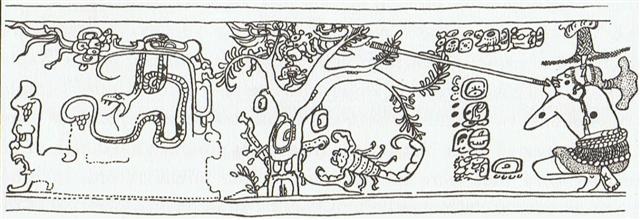 ... This pot depicts one of the Hero Twins (One-Ahaw in the Classic texts and One-Hunaphu in the K'iche' Popol Vuh) and a great bird who is trying to land in a huge ceiba tree heavy with fruit. This mythical bird is Itzam-Yeh, Classic prototype of Wuqub-Kaqix, 'Seven-Macaw', of Popol Vuh fame. In that story, in the time before the sky was lifted up to make room for the light, the vainglorious Seven-Macaw imagined himself to be the sun. Offended by his pride, the Hero Twins humbled him by breaking his beautiful shining tooth with a pellet from their blowgun. This pot shows One-Ahaw aiming at the bird as he swoops down to land in his tree. As Itzam-Yeh lands on his perch, the text tells us he is 'entering or becoming the sky'. This particular 'sky-entering' is not the one mentioned in the Palenque text. It is the final event that occurred in the previous creation before the universe was remade. Before the sky could be raised and the real sun revealed in all its splendor, the Hero Twins had to put the false sun, Itzam-Yeh, in his place. If the date on this pot corresponds to that pre-Creation event, as we believe it does, then Itzam-Yeh was defeated in 12.18.4.5.0 1 Ahaw 3 K'ank'in (May 28, 3149 B.C.) ... |
| CLOSE TO THE SUN: |
| Nov 27 (148 + 183) |
28 (332 = 149 + 183) |
29 (355 - 32 = 333) |
30 (*254 = *71 + *183) |
Here the skin of the Dead Old Lion (Sun) covered the left arm of Orion:

|




































